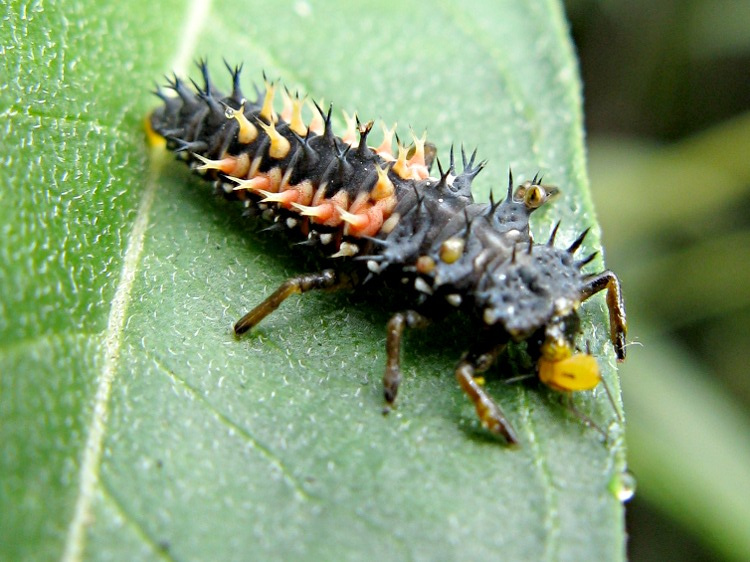Hello again everyone, this will be a quick break from the Know your enemy series but in keeping with the theme we’ve established thus far, we will start talking about the friends that you might introduce, or stumble upon, in your gardens.
This entry will be about Orius Insidiosus or more commonly known as the Insidious Flower Bug.
Biology:
Orius insidiosus has multiple generations per year. The total developmental time from egg to adult is approximately three weeks. Adult females lay their eggs within plant tissues, and eggs hatch in six to ten day. Orius insidiosus undergoes incomplete metamorphosis, (meaning that the insect hatches from an egg and goes through several nymphal stages which each resembling the adult and getting larger in size) and nymphs develop through five instars. Development of the nymph requires at least ten days, depending on temperature . Adults live for approximately three to four weeks. . Nymphs and adults are highly mobile. When day length is less than 14 hours, adults may enter a resting state, although this is somewhat disputed and most likely depends on other environmental factors as well.
Adults are very small (3 mm long), somewhat oval-shaped, and black with white wing patches. Wings extend beyond the the tip of the body. Nymphs are small, wingless insects, yellow-orange to brown in color, teardrop-shaped and fast moving. Both adults and nymphs feed by sucking juices from their prey through a sharp, needle-like beak (the rostrum), which is characteristic of all Heteroptera (true bugs) and is actually somewhat disturbing to witness first hand ngl.
Orius will spread very quickly from the point of release and will be quite difficult to find again once they have dispersed. Checking areas of high populations of Western Flower Thrip will often reveal small groups of Orius developing in their immediate area, and if multiple nymphal stages are present that is an excellent indicator of population health.
Orius will attack a wide variety of pest insects and is considered a generalist predator. Two Spotted Spider Mite, aphid, whitefly, scale insects, moth larvae, and many eggs of various species have all demonstrated to be adequate Orius food sources however it has shown a vast preference for Western Flower Thrip and that is its principle use as a Biological Control Agent. When feeding on its prey, it introduces a paralytic toxin into their bodies that holds them still while they are consumed. They will also bite you as well if given the opportunity and its pretty noticeable when it happens.
Populations of Orius can be perpetuated in your grow with a few methods. You can provide an alternative food source for them in the form of Ephestia Eggs, which are sold under various brand names by manufacturers (Try "Bug Food-E) as well as Brine Shrimp eggs which are gaining popularity.
You can also add banker plants to your grow to provide them a source of pollen to feed on in the absence of prey. There are several species of plant that can support them in this way, but the most popular and effective that I have found are ornamental peppers; specifically the “Purple Flash” variety.
Do any of you use Orius Insidiosus in your grows? What has your experience been like with them? Does anyone have requests for information about specific beneficials? I have had a fair amount of experience with a wide variety of the most commonly used beneficials and several “Volunteer” species that have come into my greenhouses and been convinced to stick around.


